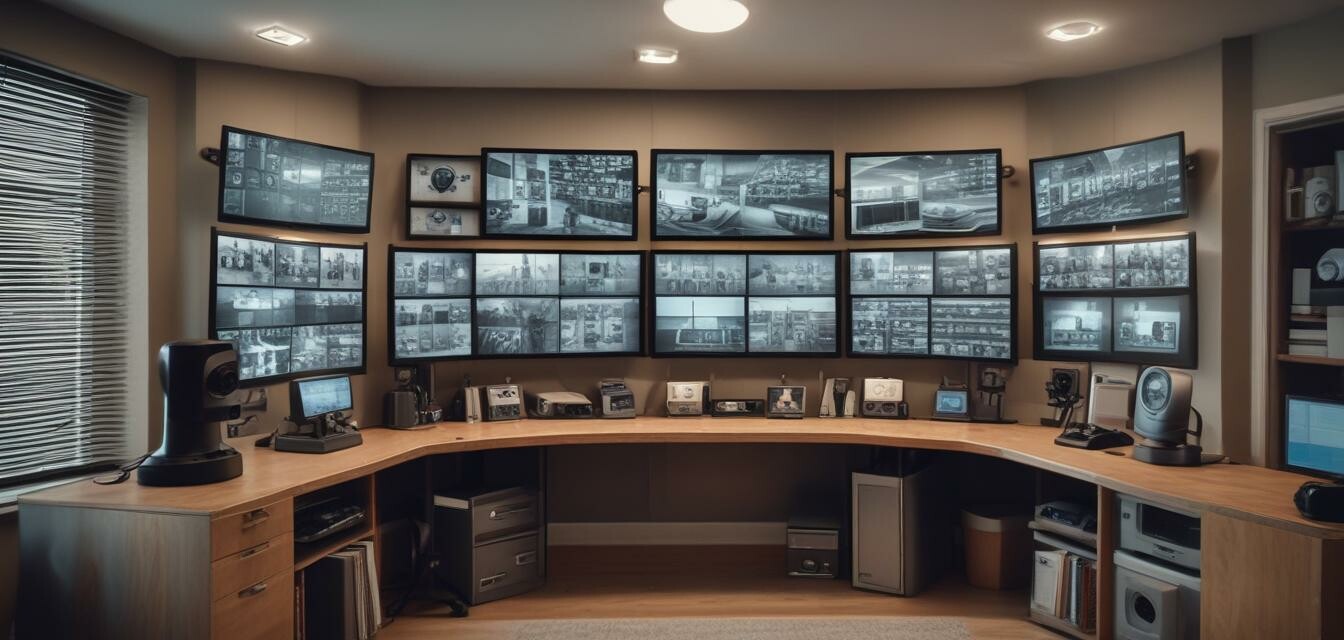
Smart Home Security
Understanding the Basics of Home Surveillance
Key takeaways
- Home surveillance systems enhance security by monitoring your property.
- Understanding the components can help you choose the right system for your needs.
- Effective use of surveillance requires knowledge of camera placement, features, and technology.
- Integrating smart technology can boost your home security measures.
- Staying informed about the latest trends in home security is crucial.
As more homeowners turn to smart home security systems, understanding the components and functions of home surveillance has become essential. This introductory guide is designed to help you grasp the basics of home surveillance systems.
What is a home surveillance system?
A home surveillance system consists of cameras, monitors, and other components designed to observe and record activity in and around your home. These systems can deter crime, provide evidence in case of incidents, and help you keep an eye on your property while you’re away.
Key components of home surveillance systems
| Component | Description |
|---|---|
| Cameras | The eyes of the system, capturing video footage of your property. |
| Monitors | Devices for viewing live or recorded video footage. |
| Control Panel | The hub that connects all components, allowing for centralized control. |
| Storage Device | Stores video footage for playback and review. |
| Smartphone App | Allows remote monitoring and control via your mobile device. |
Types of cameras
When choosing cameras for your home surveillance system, consider the following types:
- Indoor Cameras: Ideal for monitoring the inside of your home.
- Outdoor Cameras: Built to withstand weather and provide surveillance outside.
- Wireless Cameras: Easy to install and can be placed anywhere without wiring concerns.
- Smart Cameras: Can integrate with other smart home devices and offer advanced features.
Factors to consider when choosing a system
Before you invest in a home surveillance system, consider these essential factors:
- Coverage Area: Ensure that all essential areas are covered.
- Resolution: Higher resolution cameras provide clearer images.
- Storage Options: Check if you prefer local storage or cloud storage options.
- Integration: Look for systems that can integrate with other smart home devices.
- Remote Access: Being able to view footage remotely via a smartphone app is vital.
Best practices for home surveillance
Implementing the right strategies can optimize your home surveillance system. Here are a few best practices:
- Position cameras at entry points like doors and windows.
- Ensure cameras are mounted at a height where they can’t be tampered with.
- Utilize motion detection features to save storage space.
- Regularly review footage and maintain your system to ensure functionality.
- Stay updated on software and firmware upgrades to maintain security.
Maintaining your surveillance system
Just like any technology, regular maintenance is necessary for optimal performance. Here are some tips:
- Clean the cameras regularly to avoid dirt obstructing the view.
- Check battery levels if your system is wireless and replace them as needed.
- Test all camera functions periodically to ensure everything works correctly.
- Update software whenever updates are available to enhance security.
Staying informed about the latest trends
The world of home security is rapidly evolving, with new features and technologies constantly emerging. Some of the trends include:
- AI Integration: Many systems now use artificial intelligence for better analysis and notifications.
- Home Automation: Surveillance systems can be integrated with other smart devices for greater convenience.
- Cloud Storage: Offers flexible storage solutions that can be accessed anywhere.
- More Affordable Options: As technology advances, more budget-friendly surveillance options are becoming available.
Tips for beginners
- Start with a basic system and then expand as you understand your needs better.
- Research different brands and models before making a purchase.
- Consider professional installation if you're unsure about DIY setups.
- Ask for recommendations from friends or family with experience.
Pros
- Enhances the safety of your home and family.
- Deters crime and can lower insurance premiums.
- Adds peace of mind when away from home.
Cons
- Initial setup costs can be high.
- Requires ongoing maintenance and monitoring.
- Privacy concerns if not properly managed.
For more tips on securing your home, check out our Home Security Tips section or explore security lighting options to complement your system. If you're looking for the best motion sensors, we have some great insights as well.
Understanding the basics of home surveillance is the first step toward creating a safer environment for you and your family. With the right tools and knowledge, you can effectively monitor and protect your property.
For additional resources, read our Buying Guides to make informed decisions on your home security needs.